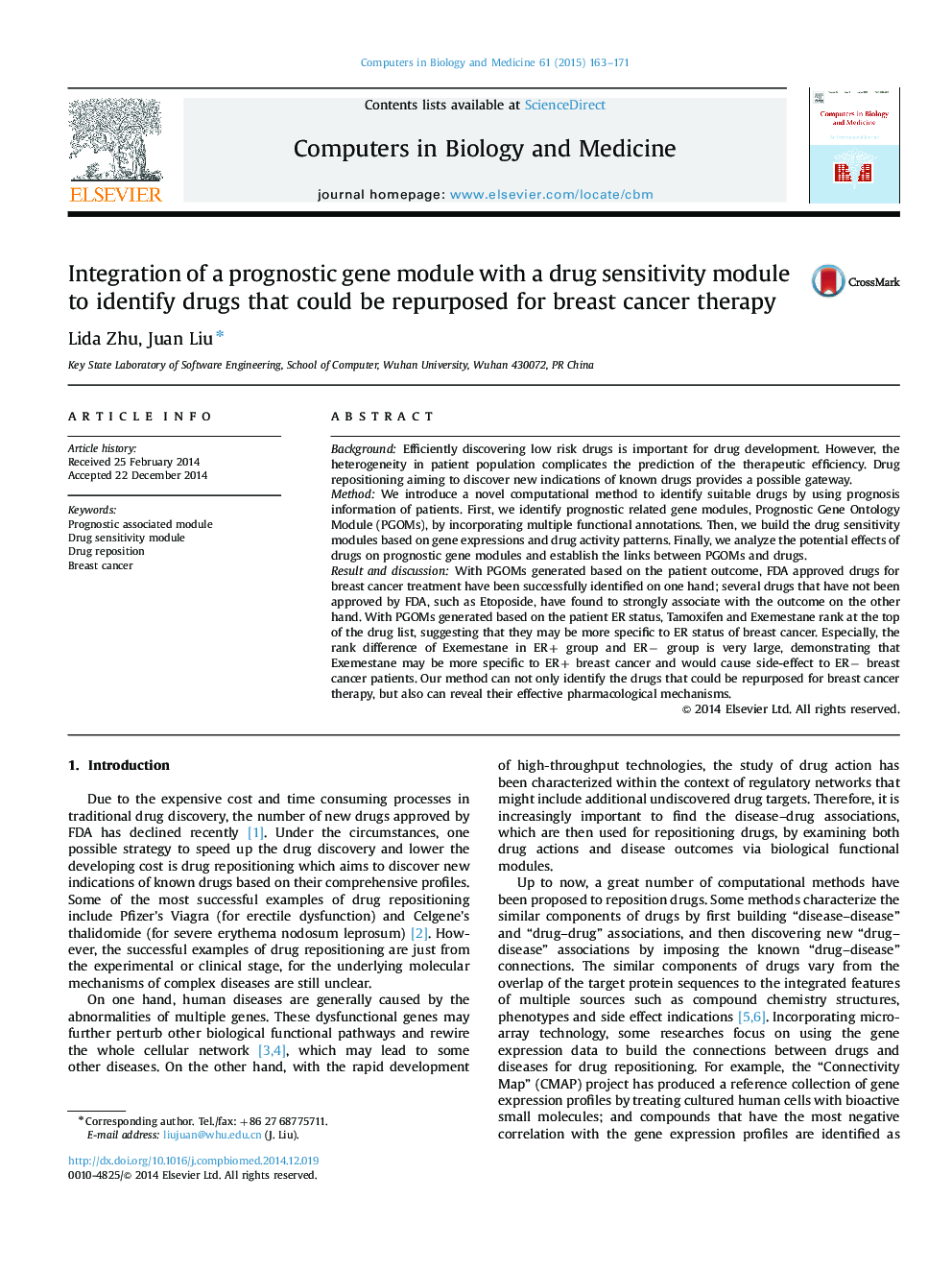| کد مقاله | کد نشریه | سال انتشار | مقاله انگلیسی | نسخه تمام متن |
|---|---|---|---|---|
| 505024 | 864466 | 2015 | 9 صفحه PDF | دانلود رایگان |
• New approach to identify suitable drugs for breast cancer therapy is proposed.
• Etoposide is found to have strong association with breast cancer outcome.
• Exemestane may be more specific to ER+ breast cancer.
• Our method can find drugs that could be repurposed for breast cancer therapy.
BackgroundEfficiently discovering low risk drugs is important for drug development. However, the heterogeneity in patient population complicates the prediction of the therapeutic efficiency. Drug repositioning aiming to discover new indications of known drugs provides a possible gateway.MethodWe introduce a novel computational method to identify suitable drugs by using prognosis information of patients. First, we identify prognostic related gene modules, Prognostic Gene Ontology Module (PGOMs), by incorporating multiple functional annotations. Then, we build the drug sensitivity modules based on gene expressions and drug activity patterns. Finally, we analyze the potential effects of drugs on prognostic gene modules and establish the links between PGOMs and drugs.Result and discussionWith PGOMs generated based on the patient outcome, FDA approved drugs for breast cancer treatment have been successfully identified on one hand; several drugs that have not been approved by FDA, such as Etoposide, have found to strongly associate with the outcome on the other hand. With PGOMs generated based on the patient ER status, Tamoxifen and Exemestane rank at the top of the drug list, suggesting that they may be more specific to ER status of breast cancer. Especially, the rank difference of Exemestane in ER+ group and ER− group is very large, demonstrating that Exemestane may be more specific to ER+ breast cancer and would cause side-effect to ER− breast cancer patients. Our method can not only identify the drugs that could be repurposed for breast cancer therapy, but also can reveal their effective pharmacological mechanisms.
Journal: Computers in Biology and Medicine - Volume 61, 1 June 2015, Pages 163–171
